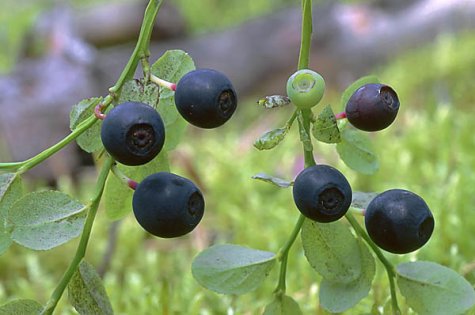Blue mouths!
Photo: Arne Ader
Translation: Liis
Bilberry.
| Bilberry, blaeberry |
Harilik mustikas
|
In southern Estonia there are already bilberries to feast on. Northwards the berries still hold on to the stalks, and locally aren’t ripe yet. Time will show how much damage the heat and drought will do. But diligent pickers at least won’t be left without harvest.
It isn’t really necessary to describe the bilberry. It is a dwarf bush, and one of the tastiest of our wild berries, and the list of its uses is long. The bilberry bush mostly propagates vegetatively: horizontal rhizomes grow out in the soil from the central plant. Finding a suitable spot they develop their own roots and a new bush appears above ground. The age of a group of such shrubs or dwarf bushes joined to each other can be up to hundreds of years.
Birds of course propagate bilberries by the seeds - accompanied by a suitable shot of fertilizer: there are thrushes, grouse, capercaillies. Other forest creatures who go bilberry picking are badgers, bears, foxes, wolves...
"Blueberry" is most often used for the North American species of Vaccinium with berries with pale green flesh that don't leave the purple or blue stains of bilberries.









